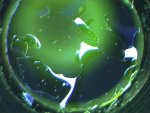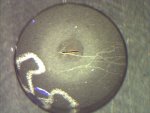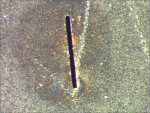- Joined
- Jun 18, 2012
- Messages
- 1,046
- Points
- 83
yes I also did this and got fantastic results. The better you can setup the mirrors to illuminate just the smallest umber of pixels the better resolution you get. I was also able to move the grating and get up into the uv and down in the nir. 300 ish down to 900 ish. it just takes time and when you think you got it don't try and make it better.....oh boy. Did that a few times. Make sure to take the order sorting filter out if you want to go above 475 ish nm. it also blocks some NIR. That said you will find fold back so don't be surprised to see ghosts.
Last, you can not put the Ocean Optics ILX chips in these and make them work. the second order filter is not for this grating.
To make the line a parallel as possible I used a small flashlight to make the rainbow and eyeballed it in. I guess you could use a camera to get a closer look. You can also focus the final dot with a gas laser to make it as small as possible. None of this is easy to make perfect and you can do pretty well by eye.
Excited. My HR2000 arrives any minute :}
I have to shout out to Steve. I learned most of this from him. Didn't want to pass this off like I was the smart one here. I knew none of this a week ago.
Last, you can not put the Ocean Optics ILX chips in these and make them work. the second order filter is not for this grating.
To make the line a parallel as possible I used a small flashlight to make the rainbow and eyeballed it in. I guess you could use a camera to get a closer look. You can also focus the final dot with a gas laser to make it as small as possible. None of this is easy to make perfect and you can do pretty well by eye.
Excited. My HR2000 arrives any minute :}
I have to shout out to Steve. I learned most of this from him. Didn't want to pass this off like I was the smart one here. I knew none of this a week ago.
Last edited:






